Fall Flycatcher Frustrations
A tale of two flycatchers
It began when I took a simple photo:
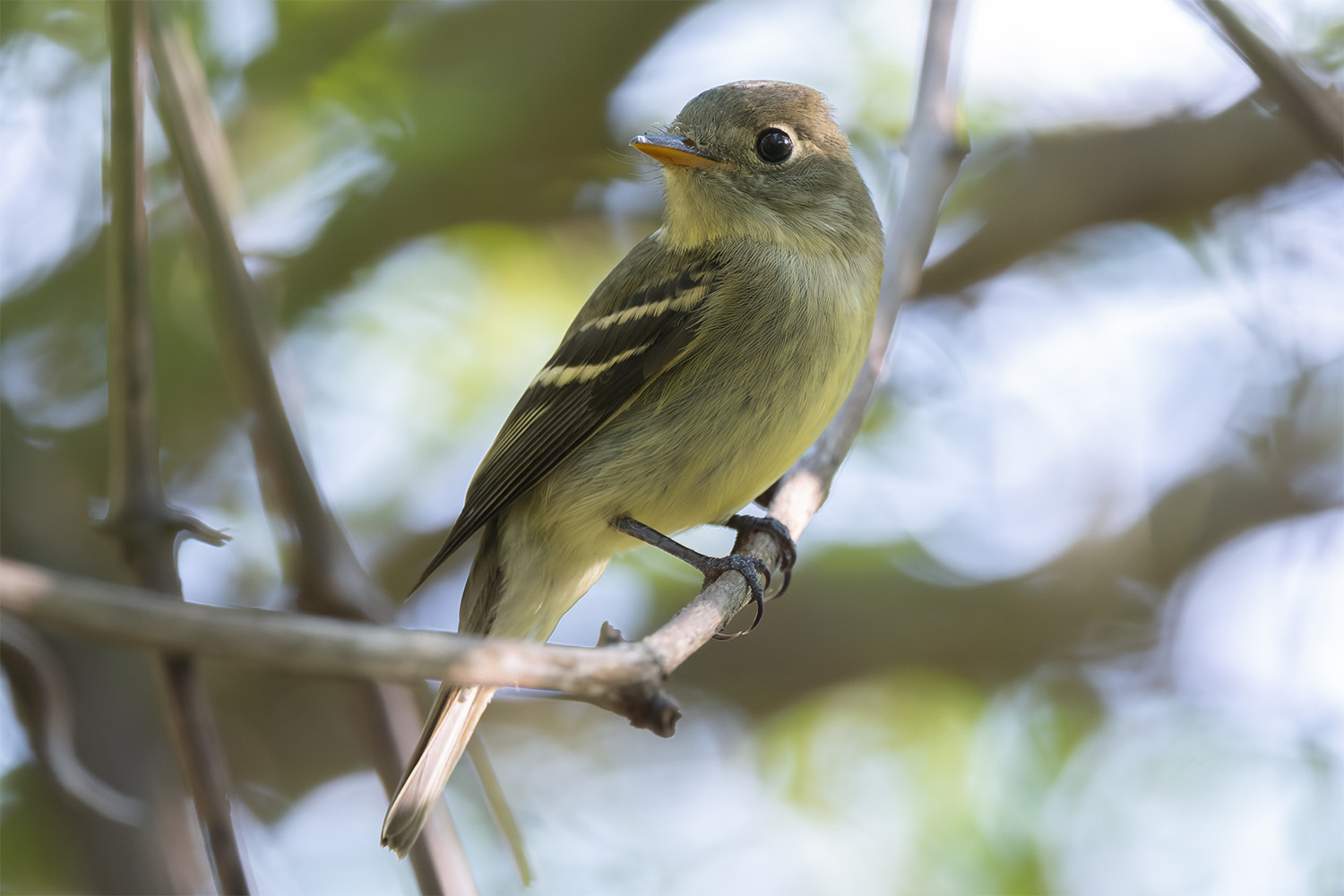
Well - it was more a series of ~500 photos. But either way - it was my first time getting such a close look at a flycatcher. I knew that empids (short for Empidonax, the genus these species fall under) were a tricky subject, but getting an accurate ID and having it approved turned out to be a bit harder than I had expected.
TL;DR: Acadian and yellow-bellied flycatchers look remarkably similar in the fall. To sufficiently ID between the two, it's best to either include audio (good luck) or have clear photos of the wings.
I came upon the bird by pure luck - I had decided to delve into a side path trying to follow a white-eyed vireo, but realized that there was another bird jumping around as well. It was completely silent, but I did notice a bit of tail pumping as it hopped between branches. My first impression that I had was that this bird was yellow. The first bird that fit the physical description as well as the color was a yellow-bellied flycatcher (YBFL), but just a few weeks ago a birding friend had told me they had just banded an Acadian flycatcher (ACFL) that was yellow as can be, and the physical features kind of matched this bird as well, so I definitely did not feel confident in IDing this bird. But with decent photos...I had to!
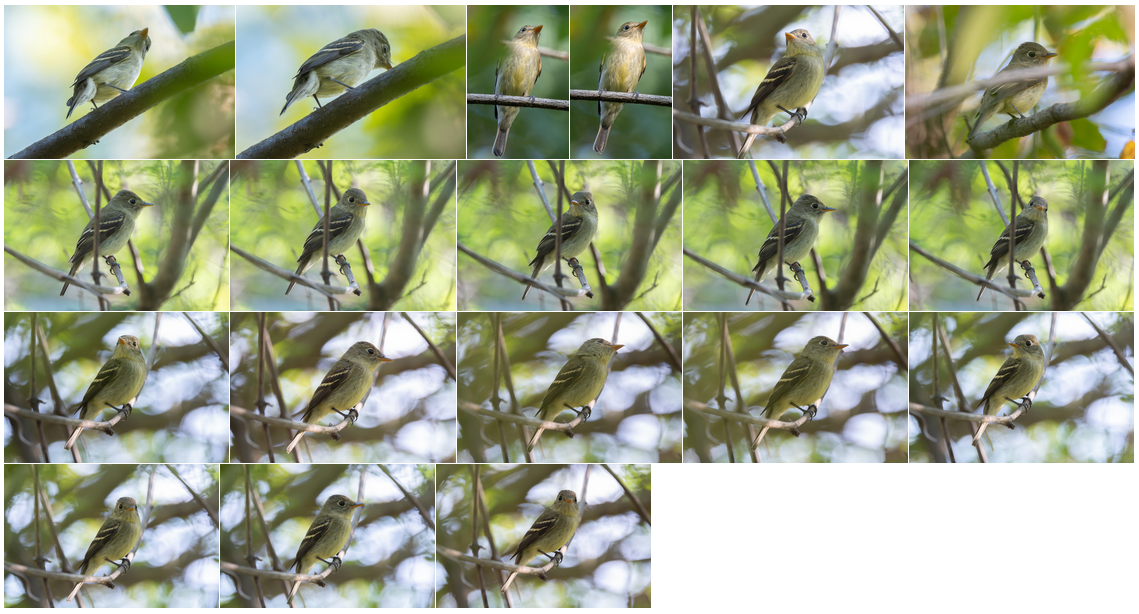
What ensued was a few days of asking the local birders, checking online resources, and asking the local eBird reviewer. I ended up with several factors to use to differentiate these two birds: length of primary projection (see below), head shape, bill length, and body size. As a newcomer to empids, comparing a somewhat short bill to a somewhat longer bill without seeing much of either bird in the wild was a hard ask. Head shape was a bit easier, and the bird was displaying a rather Acadian-like crown. However, some of the birders suggested this felt more yellow-bellied, and I was also a bit selfish in trying to get a new bird (especially when I had a similar run-in with a bird I thought was a YBFL but was rejected).
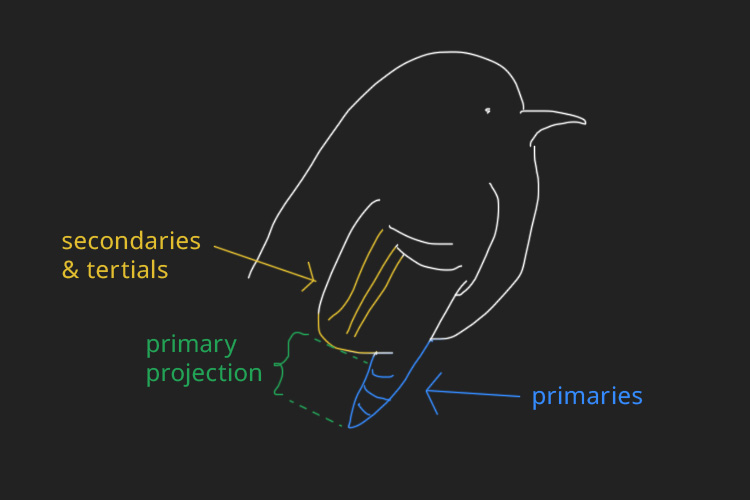
What helped the most was a book that was recommended by multiple local birders - Field Guide to North American Flycatchers: Empidonax and Pewees by Cin-Ty Lee and Andrew Birch. This book was a treasure trove of information that ultimately led to getting the bird ID'd. As I was going through the diagrams, I came upon an interesting diagram on page 80 - it was a comparison of primary tip spacing (the gaps between each feather visible in the primaries) between Acadian, yellow-bellied, and leasts. The drawing seemed to show that Acadians have a large gap at the end of the wing, while yellow-bellieds have two large gaps at the end of the wing, and the penultimate gap seemed a bit larger (and leasts just have consistent spacing all the way down). Bolstered by this, I reached out to Cin-Ty, who graciously spent some time to confirm this - Acadians will have the largest relative gap from p6-p7, and YBs will have the largest relative gap on p5-p6 (or at least, the ratio will be much closer to 1:1 than the ACFLs). Additionally, he mentioned that some of the common distinguishing features, like a peaked crown, are not always 100% indicative of Acadian, so it's best to stack up all the evidence and make a decision from there.
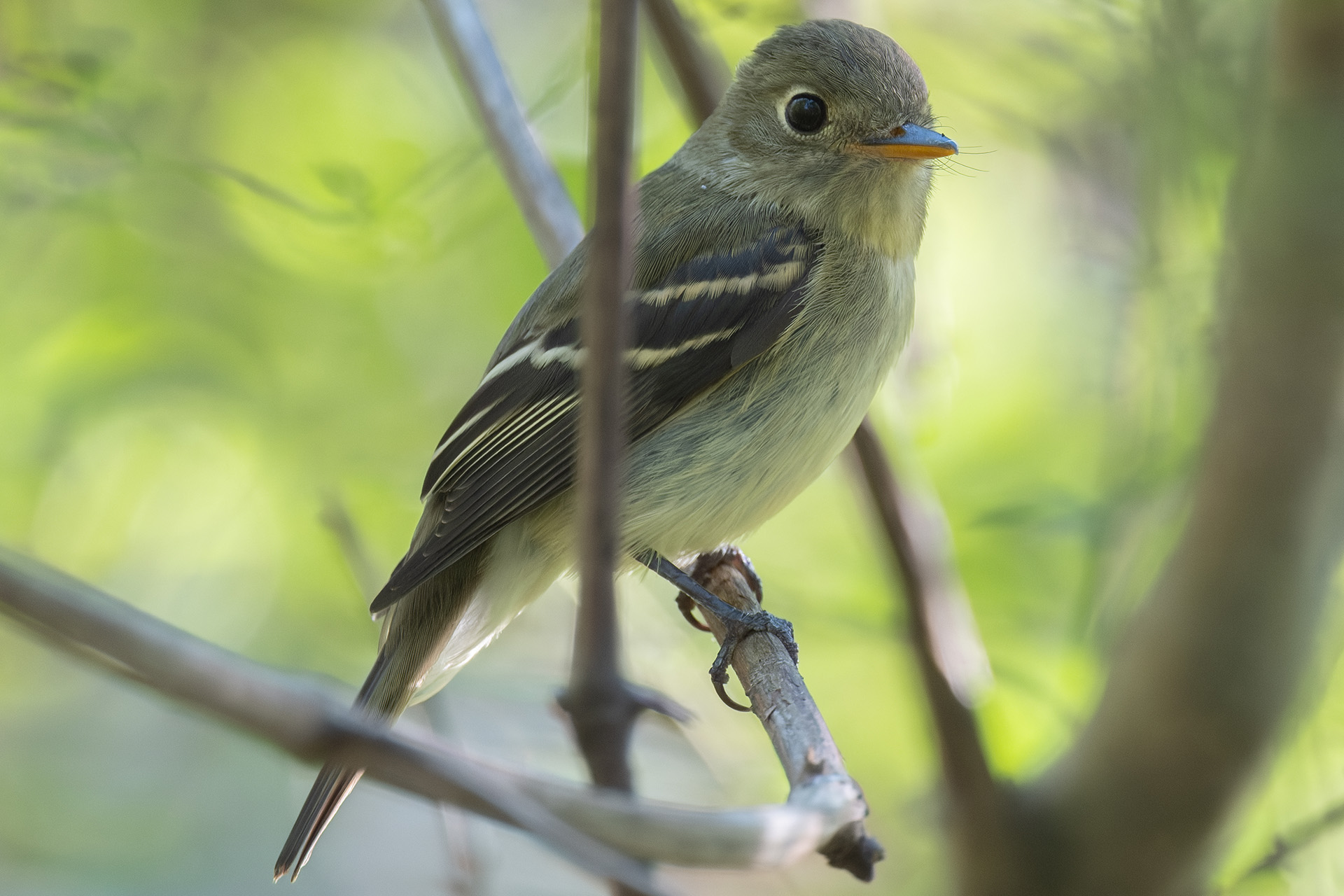
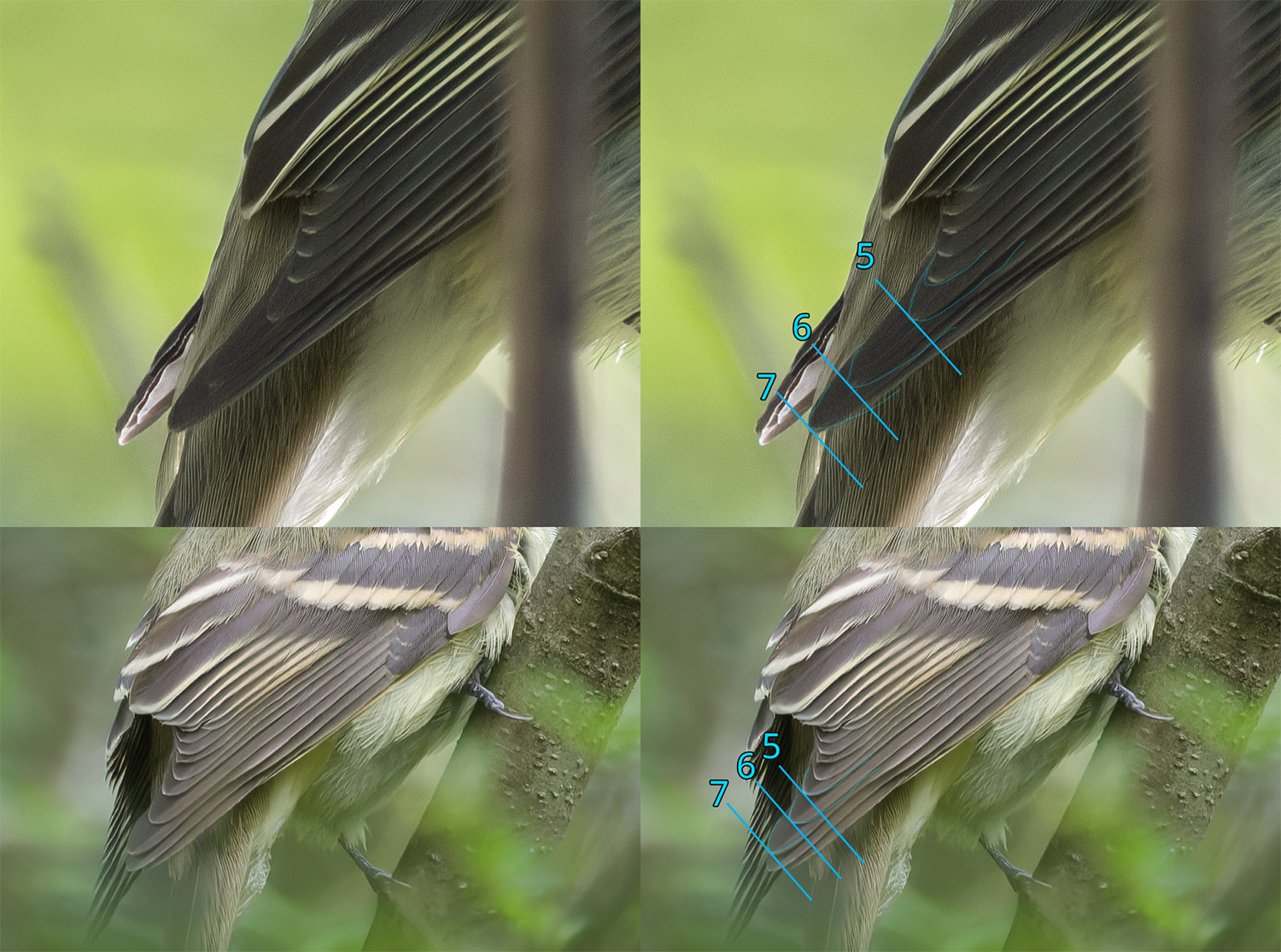
Additionally, it looks like Acadians never have emarginations past p7 (only p7-10 are emarginated), while YB's can have emargination up to p6 (but this is not always guaranteed, they sometimes can start at p7 as well - but the presence of emargination on p6 would eliminate Acadian). This is shown below and is traced from the YB from above. In this example, p7 and p6 both have emargination, while the ACFL picture from above clearly only has emargination up until p7.
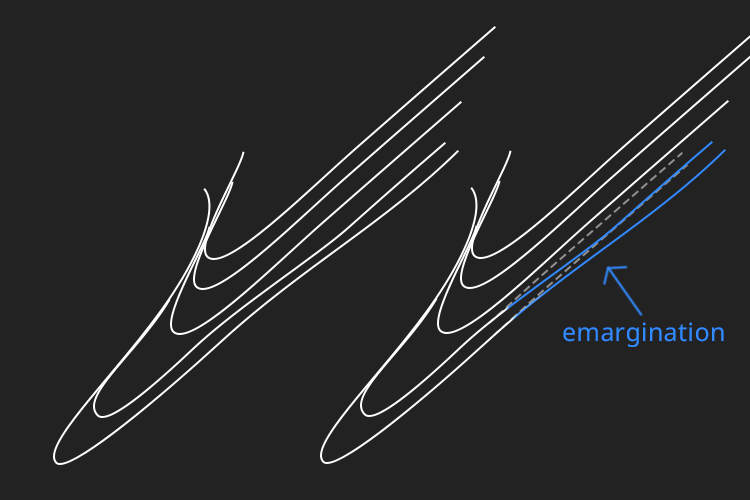
As an aside - counting the primaries was mostly guesswork for me. It was hard for me to tell where p1 started, and different birds/pictures show p7 as the furthest visible feather and others showed p8. It's still something I am not completely comfortable in doing, but I think generally if p8 is visibile, then the gap between p7 and p8 is quite small, much smaller than the next few gaps.
Some emails later, and I was able to not only get my YB approved, but we also discovered that a lot of reported YB's in the fall in Georgia are misidentified and are Acadians. This is not only due to the higher relative population of Acadians in Georgia (since they breed here) but also the extremely yellow molts Acadians take on as they get ready to migrate. But as camera technology improves and becomes more accessible, this sort of troublesome IDing can be made easier by taking the photos home and comparing them to established metrics found through research (of course, you can always do it by sight as well, but that's outside my pay grade). Just make sure to get a good view of the wings.